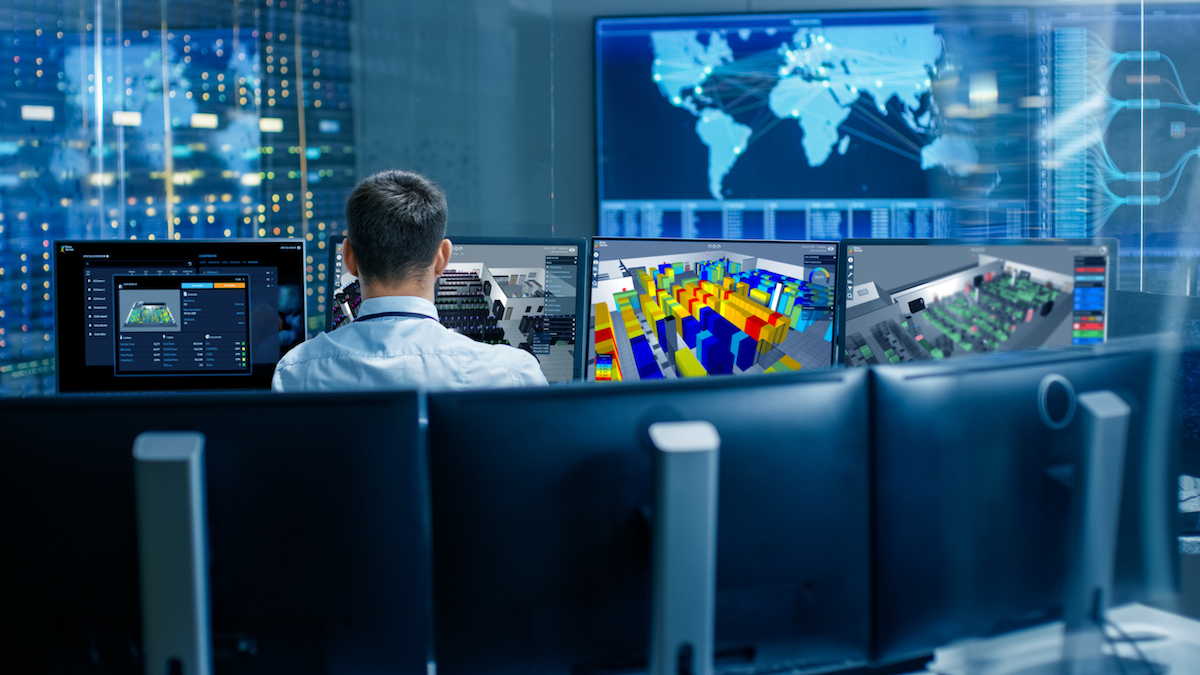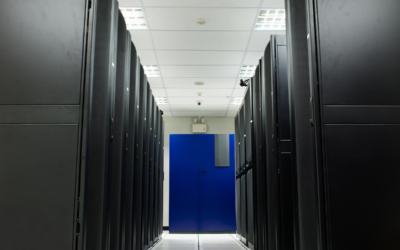5 Remote Data Hosting Practices You Need to Know17 min read

Countless months after the novel coronavirus first reached the United States, individuals and businesses are still feeling the repercussions, some more than ever. With COVID-19 remaining a main issue for the foreseeable future, businesses are solidifying remote work as their core method of operation. Data centers, however, have a unique setup that requires more attention.
Data centers are critical for holding the information that businesses of all kinds rely on. From big tech companies to entertainment services, these data centers are the reason why you have Netflix at the push of a button. Your professional life may also depend on a data center, with your organization using it to store invaluable documents and data.
If you’ve found yourself working from home for an indefinite period, you’re not alone. Data center employees must do the same, which puts them in a potentially complicated position. They must remotely monitor, protect and access all the information within the center, all while keeping the IT equipment cool.
While some employees must go to the site to carry out cooling and monitoring at various times, much of the work can be done remotely. Knowing the ins and outs of these remote data hosting practices is more critical than ever. Whether you’re choosing which data center to work with or trying to improve protocols at a center yourself, the following practices are essential:
1. Virtual Connections
Remote work may have been a daunting task at the beginning of shutdowns and stay-at-home orders, but businesses have been adjusting well. Social distancing requires virtual connections instead of meeting in person. For data centers, this switch will mean using the best forms of communication.
Zoom and Slack are ideal for videoconferencing and messaging, making communication as fast as possible. Then, employees can communicate back and forth about what parts of the data center they’re monitoring and who they’re doing business with.
If you’re seeking to partner with a data center, you’ll want to find one that can uphold consistent communication about safety, access, protocols and pricing at all times.
2. Access
Access is a big step for remote data hosting. Typically, in-person work allows different ways to provide access for employees and customers, such as through keycards, appointments and various security measures. The online shift changes that dynamic.
Professionals now need to make remote access more efficient. Multi-step authentication and strong passwords and usernames have become the new norm. Data centers contain priceless and confidential information — only those who need it should have access.
Access includes monitoring and controlling security cameras, operating systems and the data itself. The best data centers remotely control and limit who is in charge of these areas.
3. Management
Accessing information is half the battle. Taking action with that access is the next step you need to perform for data center procedures. During the increased reliance on data centers as businesses use them for remote work, connectivity and capacity are two areas to focus on.
If an error occurs, data center employees must act efficiently and quickly. To prevent people from physically going into the workplace, actions like finding the issue through management software, coding and encryption are ideal for remote work.
On the consumer side of things, remote task managers provide the best quality assistance and access for clients. You can understand the data center’s processes better and manage your own information more efficiently.
4. Digital Twin Monitoring
One of the most important tasks for data centers is cooling. If IT equipment becomes too hot, performance, uptime, and capacity can be compromised, potentially disrupting countless businesses.
Digital twin technology is a powerful monitoring and management tool that’s helping data centers move forward during the COVID-19 pandemic. With cooling especially, these systems can provide 3D visuals of the data centers, which makes it much easier for remote employees to understand what’s going on. These 3D models display thermal performance collected from countless sensors and advanced software to ultimately reduce risk and optimize the cooling infrastructure.
Monitoring the fluctuating temperatures becomes significantly easier, with fewer mistakes that would otherwise call people into the workplace.
5. Cybersecurity
2020 has been a difficult year for individuals and businesses. Regarding cybersecurity, digital crimes have increased. Cybercriminals typically thrive off the kind of disorder that events like the coronavirus pandemic bring. Cybersecurity organizations saw an 800% increase in crimes during 2020.
To properly prepare cybersecurity measures and protect against threats and breaches that could steal private information, data centers will need a strong IT team who can transition to and from remote work quickly.
They will need to focus on improving end-to-end encryption, employing multifactor authentication, addressing phishing scams, limiting access and fighting off malware. These things are all possible from remote locations — the remote data center is now stronger than ever.
The Best Data Hosting Practices
Combining these areas of protection and access will create the results you need. For clients, employees and the company as a whole, remote practices have become the new norm. These techniques will likely last after the pandemic dissipates since they keep data safe even in the most tumultuous times. Remote data hosting shows the way forward for modern data collection.
Real-time monitoring, data-driven optimization.
Immersive software, innovative sensors and expert thermal services to monitor,
manage, and maximize the power and cooling infrastructure for critical
data center environments.
Real-time monitoring, data-driven optimization.
Immersive software, innovative sensors and expert thermal services to monitor, manage, and maximize the power and cooling infrastructure for critical data center environments.

Devin Partida
Editor-in-Chief at ReHack
Devin Partida writes about data, cybersecurity and smart tech for ReHack.com, where she is also the Editor-in-Chief.







Great article! In data centers today, power efficiency and cooling resources are as critical as maintaining uptime. Software that can be deployed as a standalone DCIM monitoring solution easily is important for data center managers. Such systems can provide all the controls and information to fully utilize existing resources as well as generate alerts on conditions which can cause downtimes.